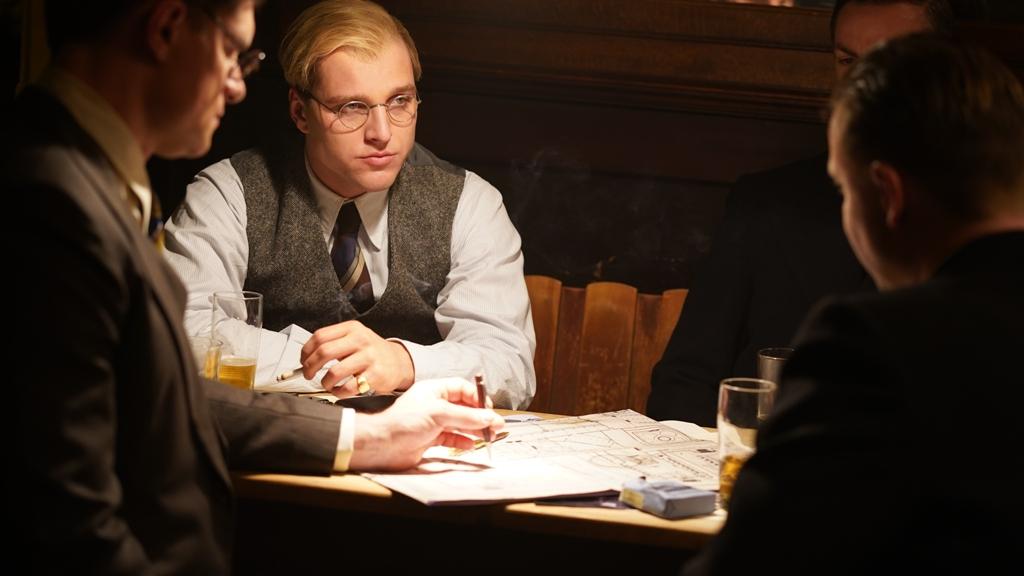A genre almost as old as the film medium itself, the crime sub-category of gangster movies is a reliable staple with a dedicated, often-fervent fan base.
Ask movie-goers to name some Italian-themed gangster flicks and you’re certain to get “The Godfather” trilogy and “Goodfellas.” If you’re lucky, you might also hear “Donnie Brasco” or “Little Caesar.” Request some mob films with Irish characters and some aficionados will answer “Road to Perdition,” “Angels with Dirty Faces,” and “Kill the Irishman.” Press them to identify a production with Jewish gangsters and if you get anything beyond “Bugsy” you’ll be talking to a serious crime-film buff.
Frequently referred to as the “Mob’s Accountant,” Meyer Lansky is arguably the most influential figure in the history of American organized crime, yet was a man few people except crime historians could readily identify.
Over last half-century there have been 15 movies and TV series’ that feature Lansky or characters strongly based on him. The most notable of these were the Hyman Roth (Lee Strasberg) character in “The Godfather Part II” and “Bugsy” where Sir Ben Kingsley portrayed him and he received a Best Supporting Actor Oscar nomination in the process. The rest? Don’t waste your time.
Given that largely unimpressive track record, is another Lansky film going to matter? The answer is absolutely yes. “Lansky” differentiates itself from all other gangster films because it includes fictional and non-fictional characters resulting in a wholly original mystery and thriller.

This Lansky
Realizing he’s approaching the end of his life, Lansky (Harvey Keitel) chooses to tell his story to fledgling novelist David Stone (Sam Worthington). It’s highly unorthodox for any high-profile alleged mob figure in general and Lansky, in particular, to reveal his life story, as he had never been convicted of anything beyond a minor “illegal gambling” charge. Why unnecessarily open a can of worms?Lansky’s only stipulations are that he can’t be recorded during the interviews and that the finished book can’t be released until after his death. At first, why Lansky picks (the fictional) Stone instead of another more accomplished writer makes no sense, but like all other matters from his past, Lansky’s every thought and action is controlling and calculated.
Dedicating equal amounts of screen time between early 1980’s Miami and flashback sequences taking place during Lansky’s post-Depression rise, director Eytan Rockaway employs a narrative style similar to that of “The Godfather, Part II.” It was a bold move and for the most part it works thanks in large part to the breakout performance of John Magaro (“First Cow”; the upcoming “Sopranos” prequel “The Many Saints of Newark”) as the younger Lansky.
It was Lansky and Charlie “Lucky” Luciano (Shane McRae) who came up with concept of consolidating rival factions of the Italian, Irish, and Jewish crime outfits into the National Crime Syndicate. Rather than engage in constant turf wars resulting in the endless spilling of blood, Lansky and Luciano convinced their competitors that sharing equal slices of an enormous illicit pie was simply a better way of doing business. It didn’t hurt the plan that Luciano and Lansky’s childhood friend Ben “Bugsy” Siegel (David Cade) were greatly feared by other criminals.
It would be difficult to make a movie about Lansky without devoting a sizeable chunk of time on Siegel and their often prickly relationship, and Rockaway includes all that is needed and no more. Two scenes depicting Siegel’s almost casual approach to violence are featured to maximum effect. When it comes time to remedy the sticky situation Siegel created when growing the gambling trade in Las Vegas, Lansky removes himself from the decision making process. Unlike most of those in his particular line of work, Lansky valued loyalty and friendship over money.
The Director’s Decision
Rockaway’s connection to Lansky is certainly unique as his screenplay is based on interviews with Lansky conducted by his academic/historian father Robert Rockaway (and an early story treatment by Ido Fluk and Sharon Mashihi). In a phone interview conducted earlier this week, I asked Rockaway why he chose to use a younger, fictional writer character instead of one based on his father.“I liked the idea of having the Stone character view Lansky as a father figure,” Rockaway said. “A standard interview would not have been as compelling. Having the writer [involuntarily] interact with the F.B.I. also gives the audience more to contemplate.” (The F.B.I. spent decades trying to figure out where Lansky supposedly stashed away over $300 million and quasi-blackmails Stone into trying to coerce information out of his subject.)
Rockaway walks a fine line for the duration of “Lansky” and deserves immense credit for not sugarcoating Lansky’s life story. It is indeed a “warts-and-all” project which paints the man in shades of grey as opposed to black and white. He did bad things to bad people—and claimed to have never committed murder—but was also someone who protected American financial interests during World War II and provided considerable financial aid to Israel at a crucial point in their early history.
Lansky was a fascinatingly conflicted man. Rockaway, his crew, Keitel, and Magaro have crafted an engrossing and indelible movie of his life story.






